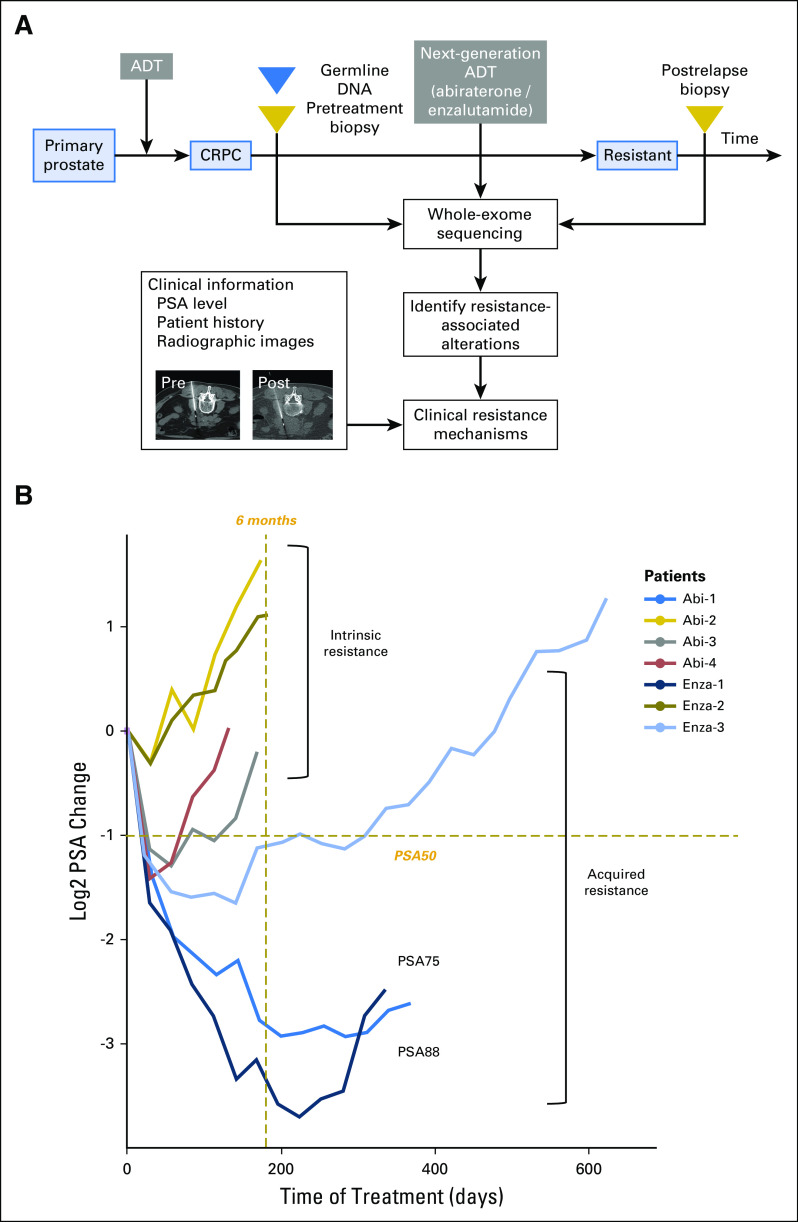Fig 1.
Patients with resistance to next-generation androgen-deprivation therapy (ADT) can be classified according to acquired and intrinsic mechanisms using prostate-specific antigen (PSA) level change. (A) Schematic overview of paired (pre- and post-treatment) tumor biopsy collection in the context of next-generation ADT, abiraterone, and enzalutamide, followed by whole-exome sequencing and computational analysis to investigate clinical resistance mechanisms. (B) Change in PSA levels between the start of treatment (at the time of pretreatment biopsy, day 0) and the end (at the time of post-treatment biopsy) of treatment. The change was calculated by log two-fold change of the PSA level at each time point relative to PSA level on day 0. PSA50 (50% decrease in PSA level) and PSA75 are indicated as −1 and −2, respectively, on the y-axis. Patients with acquired resistance were defined as those who were on therapy for > 6 months (left of gold dashed line) and who initially displayed a PSA level change > PSA50 (below gold dashed line) between the time to nadir from baseline. Remainder patients were stratified as intrinsically resistant. CRPC, castration-resistant prostate cancer.

